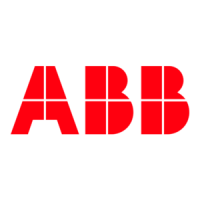________________________________________________________________________________________________________
AC500-eCo - 33 -
Hardware Introduction
4.5 Bus System Overview
Brief information about Ethernet
Ethernet
Ethernet operates with a data rate of 10 MBit/s and as Fast-Ethernet with 100 MBit/s. Ethernet
utilizes the producer/consumer model. This means that every station possesses equal rights.
While it is transmitting, all other stations listen in and accept the data directed to them. Bus
access is regulated by the CSMA/CD procedure (Carrier-Sense Multiple-Access with Collision
Detection), where each station may autonomously transmit when the bus is free. If a collision
occurs, if two stations begin to transmit simultaneously, both of them will stop transmission and
wait for a randomly determined time before they transmit again. Ethernet defines the Layers 1
(Physical Link) and 2 (Data Link) of the OSI model.
The AC500 supports transmission and reception of data using TCP/IP and/or UDP/IP. Further
application layers can be implemented by subsequent loading. Simultaneous operation of
TCP/IP, UDP/IP and application layer is also assured. The IP, TCP, UDP, ARP, RP, BOOTP, and
DHCP protocols are supported as a standard feature, as application layer Modbus/TCP.
Topology
Star- or ring-shaped using Ethernet hub or switch.
Data transmission
Max. 10 MB/s with 10 Base T and max. 100 MB/s with Fast-Ethernet.
Transmission media
Twisted-pair cables with RJ45 connector. The maximum cable length is 100 m for 100 MB/s.
Diagnostics
Detailed diagnostic messages for rapid trouble-shooting are shown on the CPU display or can be
called using the programming tool. In addition, the device status is indicated at the
communication module by four LEDs.
Brief information about Modbus
Modbus® RTU (developed by Modicon in 1979)
Modbus® RTU is an open master/slave protocol, and can be easily implemented on serial
interfaces. Numerous automation systems have Modbus® RTU interfaces as standard or
optional features, and are thus easily able to communicate with the AC500 via its integrated
COM1 and COM2 interfaces (RS232 or RS485). The Modbus® is used not only in industrial
applications, but also in building installations, in energy optimization systems, for long-distance
data transmission and for linking up operator panels.
Communication
By polling, i.e. the master transmits a request to the slave and then receives the response. Both
interfaces COM1 and COM2 can operate simultaneously as Modbus interfaces. The Modbus
operating mode of an interface is set using the engineering tool.
Topology

